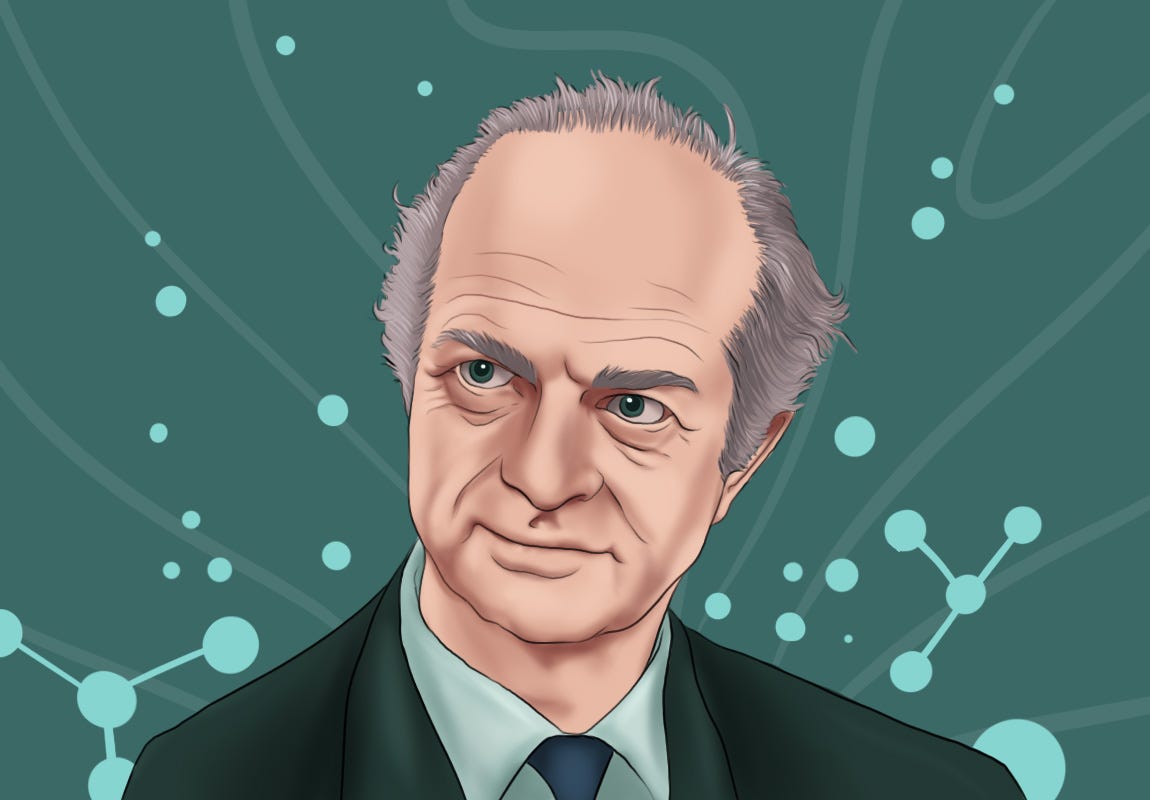Linus Carl Pauling, the only person to win two unshared Nobel Prizes, was arguably the greatest chemist of the twentieth century.
Linus Pauling was born on February 28, 1901, in Portland, Oregon, United States. Pauling was the first of three children and the only son of Herman Pauling, a pharmacist and Lucy Isabelle Pauling, a pharmacist's daughter.
Pauling completed his schooling in Condon and Portland and joined the Oregon State College in 1917. In 1922, he received his Bachelor of Science degree in chemical engineering summa cum laude. During his college days at Oregon State College, he met Ava Helen Miller, who would later become his wife. After graduation, he attended the California Institute of Technology (Caltech), where he worked under Professor Roscoe G. Dickinson and Richard C. Tolman. Professor Dickinson showed him how to determine the structure of crystals using X-rays. From 1919, Pauling had been interested in molecular structure and the nature of the chemical bond. When he joined Caltech, with Professor Dickinson, he began the experimental determination of the structures of some crystals and also started theoretical work on the nature of the chemical bond.
During his trip to Germany in 1930, Pauling learned about the electron diffraction technique of scattering electrons from the nuclei of molecules.
In 1925, Pauling received his PhD in chemistry with minors in physics and mathematics. He was awarded PhD for a dissertation based on his crystal-structure papers. After a brief period as a National Research Fellow, Pauling received Guggenheim Fellowship to study quantum mechanics in Europe. He spent 18 months at Arnold Sommerfeld's Institute for Theoretical Physics in Munich, Germany.
In 1927, Pauling returned to Caltech after completing his post-doctoral studies, and he officially began a long career in teaching and research. In his study, Pauling focused on analysing the chemical structure. He determined the three-dimensional arrangement of atoms in several important silicates and sulfide minerals by using the technique of X-Ray diffraction.
During his trip to Germany in 1930, Pauling learned about the electron diffraction technique of scattering electrons from the nuclei of molecules. When he returned to Caltech after the trip, he used this technique to determine the structures of some important substances. This knowledge helped him develop an electronegativity scale in which he assigned a number representing a particular atom's power to attract electrons in a covalent bond.
After using X-ray analysis as an experimental tool for exploring molecular structure, Pauling turned his focus to quantum mechanics as a theoretical tool. With the help of quantum mechanics, he developed the valence bond theory. He proposed that a molecule could be described by an intermediate structure that was a resonance combination (or hybrid) of other structures. In 1939, he published the book The Nature of the Chemical Bond and the Structure of Molecules and Crystals, which provided a unified summary of his vision of structural chemistry.
By the mid-1930s, Pauling developed an interest in the structure of the protein. Along with biochemist Alfred Mirsky, he published a paper on general protein structure in 1936.
On one of his trips to visit Alfred Mirsky in New York, Pauling met Karl Landsteiner, an Austrian-American biologist who distinguished blood groups. Landsteiner became Pauling's guide into the field of immunochemistry. During World War II, Pauling focused more on practical solutions than theoretical work including work that focused on creating an artificial substitute for blood serum useful to wounded soldiers and an oxygen detector for submarines and airplanes.
In the 1950s, along with his wife, Pauling started to concentrate more on humanitarian activities.
Robert Oppenheimer invited Pauling to lead the chemistry section of the Manhattan Project. However, Pauling refused the offer as he was suffering from glomerulonephritis. Pauling was later awarded Presidential Medal for Merit for his services during the war.
After the war, Pauling focused on the study of sickle-cell anaemia. During the studies, he discovered that the sickling of the cells might be caused by a genetic mutation in the globin portion of the blood cell's haemoglobin. In 1940, Pauling and his co-workers published a paper identifying the defect in haemoglobin's structure responsible for sickle-cell anaemia. This paper paved the way to identify sickle-cell anaemia as the first molecular disease to be discovered.
In the 1950s, along with his wife, Pauling started to concentrate more on humanitarian activities. They wanted to stop the atmospheric testing of nuclear weapons. In 1958, they appealed to the UN for a test ban signed by 9,235 scientists from 44 countries. He published the book, No More War in the same year, which echoed his passionate analysis of the implications of nuclear war.
Pauling was awarded Nobel Prize for Chemistry in 1954 "for his research into the nature of the chemical bond and its application to the elucidation of the structure of complex substances." His work on behalf of world peace earned him his second Nobel Prize. He was awarded the 1962 Nobel Prize for Peace, which was awarded on October 10, 1963, the date that the Nuclear Test Ban Treaty went into effect.
Linus Pauling published more than 1200 papers during his lifetime, of which about 850 dealt with scientific topics. He died on August 19, 1994, in California.
Thank you for listening. Subscribe to The Scando Review on thescandoreview.com.
Happy Teaching!














Linus Pauling: Only person to win two unshared Nobel Prizes